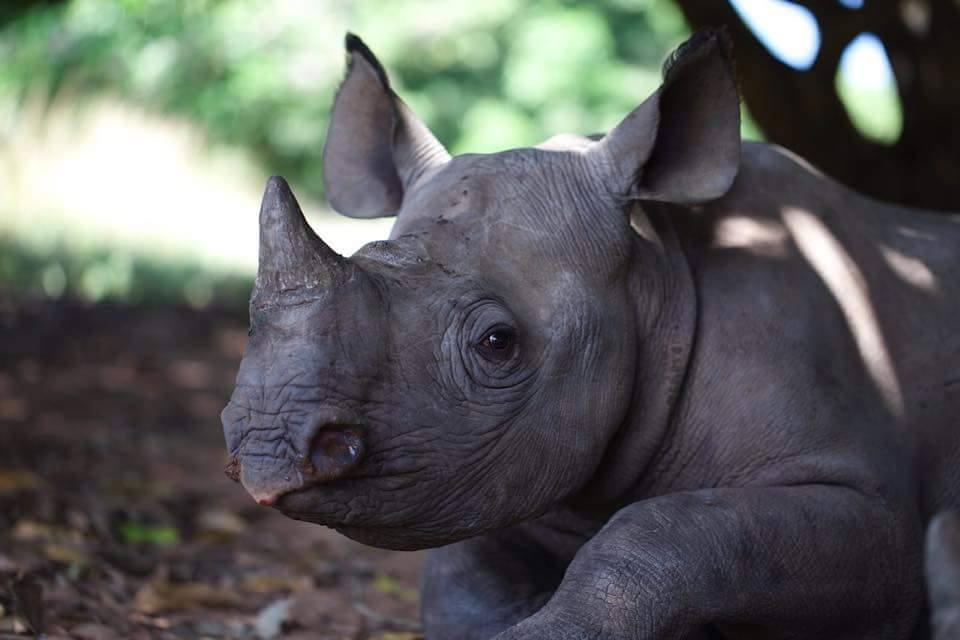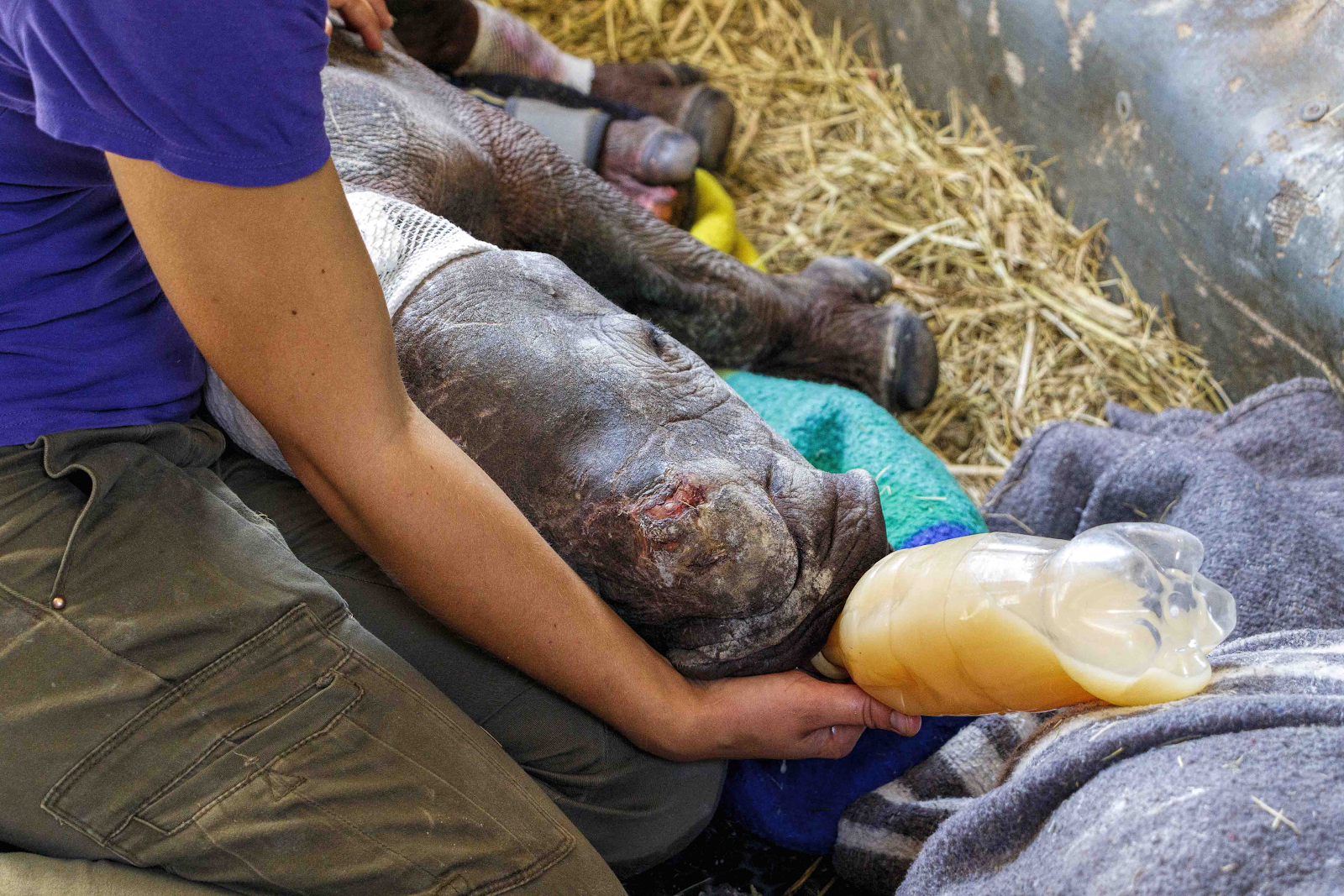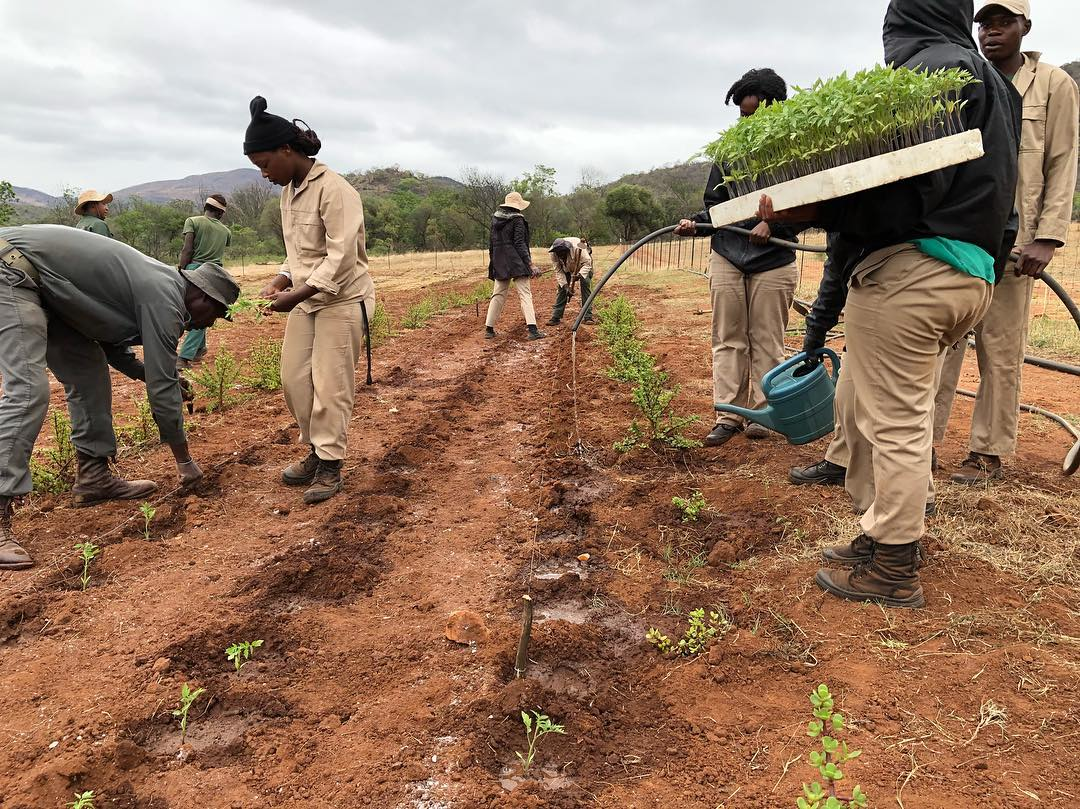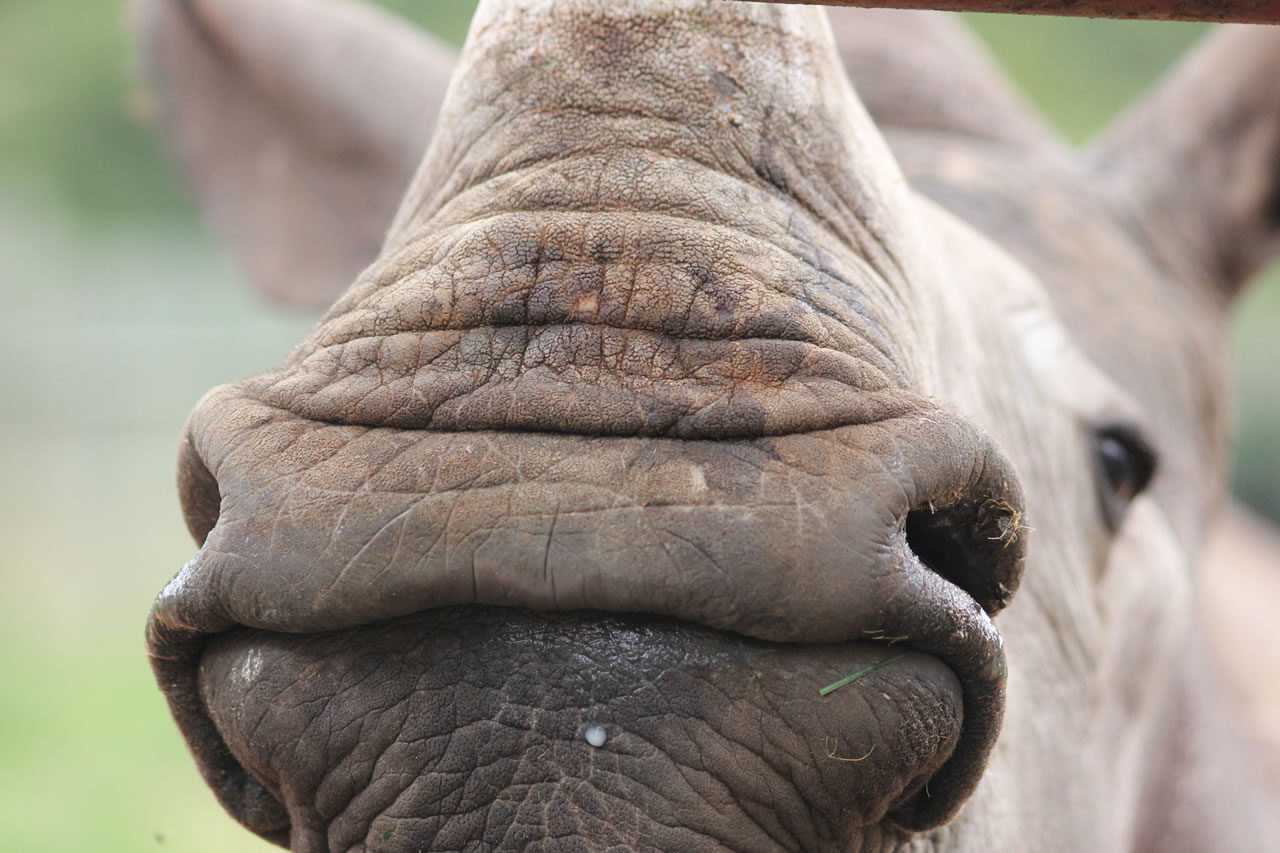Do you Care for Wild?
Rio Button
February 24, 2021 · 7 min read
As rhino poaching soars, what happens to the orphaned rhino calves left behind?

Blood flowing down from his ankles and severed tendons, petrified he stumbled through the darkness back to his mom’s corpse. The little rhino’s ears’ still ringing from the booming crack of the gunshots that hit her. When the first bullet tore through her skin, she let out a guttural scream. In pain and panic, she hurtled into the night through the veld and thorny acacia thickets. He followed her screams, but so did they. They shot her again and again, but she kept running… Eventually, she collapsed from blood loss and sheer exhaustion. She lay there, a grey heap drenched in blood and moonlight. Wailing to her calf, as he bumbled around her crying desperately. The poachers followed her wailing and arrived puffing and panting. One of them drew a saw from his backpack and began the horrific deed. The other men tackled the petrified baby rhino to the ground, pinned him and with their machetes hacked into his ankles. Then chased the little rhino off into the darkness. Each time the little rhino tried to come back to his mother they threw rocks at him and he fumbled back into the night terrified and traumatised. With the annoying calf gone they went back to their task.
Though we will never know exactly what transpired that horrific night we know this little calf survived and was recused, he is one of the few lucky ones. He was given the valiant name of “Arthur The Brave”, because of his determination and brave spirit.
You can learn more about his journey on his wildcard, here. His wildcard raises funds for ‘Care for Wild’, the centre where he is being rehabilitated. Care for Wild is renowned for rescuing, rehabilitating, rewilding and releasing rhinos. The establishment was founded and is headed up by Petronel Nieuwoudt.

A life of devotion to African wildlife
Petronel has always loved caring for wildlife, bringing injured and abandoned animals home throughout her childhood. She was raised on a farm in Limpopo. After her university studies, she began her career in the Endangered Species Unit of the South African Police Service where she worked her way up to the rank of captain. After 10 years in the police force, she left to open the Game Capture School where she taught best practices for wildlife capture, care and management. She then started Sondela Wildlife Centre in Bela Bela, the Tamboti Wildlife Centre in Mookopong and finally in 2011 Care for Wild in Mpumalanga.


Care for Wild
Petronel made her greatest dream a reality with the establishment of Care for Wild, which is a rescue rehabilitation centre and a safe space for all wildlife in need. As the rhino poaching crisis escalated in South Africa, she noticed the need for a specialised care facility and safe release site for rehabilitated rhinos. So Petronel developed Care for Wilds rhino sanctuary, which is now the largest orphan rhino sanctuary in the world, they have rescued over 80 rhinos. They rehabilitate, rewild and release these rhinos into a highly protected area to ensure the survival of the species. Their protection and security strategy involves 24/7 armed rhino monitors as well as cameras; thermal imaging; drones; highly trained detection, apprehension and tracking working dogs, as well as horseback patrols which monitor and mitigate potential threats.

Creating tangible conservation benefits to local communities
Care for Wild uses conservation as an empowerment tool not only providing jobs, but also training, paid internships, education and developing livelihoods and micro-economies. Petronel says, “people from the communities around the reserve work as field rangers, game scouts and nature reserve general assistants (conservation workers) and are involved with eradicating alien invasive plants, repairing road infrastructure, maintaining fences, preparing the annual fire breaks and responding to fires on the reserve and in the communities”.The sanctuary has also established a large vegetable garden that provides fresh produce to the sanctuary’s staff and interns. “Over the past year, the garden has also been used to train several of the interns in all aspects of vegetable production. The long-term intention is to establish more of these gardens in the communities surrounding the sanctuary,” Petronel explains. The first of these community-based gardens have been established within Mandela Village and is managed by a community entity called the Sunrise Community. They are also embarking on a partnership with the local Lomshiyo Community in order to create a commercial farming venture, which will provide profits, jobs and agricultural training to the community. The tangible benefits Care for Wild creates for local people helps them see the real value in conservation. Petronel and her team really do care for the wild and local communities, that’s why we at Wildcards are really proud to partner with them.

Care for Wild partners with Wildcards!
The Arthur wildcard has been launched to raise funds for Care for Wild, and more cards will be launched soon. Each wildcard has a captivating, fact-filled story about an individual animal, in Care for Wilds care. You can publicly buy one of these Wildcards online, which will make you the guardian of that Wildcard animal. When you buy a Wildcard, you must set the price you are willing to sell it for. Every month, as the guardian of a Wildcard, you will give a specified portion of the selling price you set, to that animal’s representative conservation agency, in this case, Care for Wild. At any point, someone can buy the Wildcard from you, at the selling price you specified. When someone buys the Wildcard from you, they must set a selling price. The new guardian of the Wildcard is then responsible for giving the new monthly subscription. And so the cycle continues, to generate funds.

Wildcards is ecstatic about connecting funders with conservation agencies having a real-world impact on the protection of wild animals and helping to rewild the world.

Also read:
Wildcards: an unprecedented means of funding conservation
Follow Wildcards on Twitter: @wildcards_world
Follow Wildcards on Facebook: @wildcards.conservation
Instagram: @wildcards_world
Join us on Discord
Join us on Discord
Rio Button
 Photo courtesy of Care for Wild.
Photo courtesy of Care for Wild.
Dr Seahorse’s journey
From unravelling seahorses’ secret sounds to safeguarding the habitat of these little super dads. St...
Rio Button
June 29, 2022 · 5 min read
What wild animal leaves teddy bear footprints behind?
Photo by Helena Atkinson. Photo by Helena Atkinson. Here are some clues… Using their sticky tongues,...
Rio Button
February 07, 2022 · 9 min read
Tech innovation: Solving wildlife conservation's greatest challenge
Tech start-up Wildcards has raised over 130,000 USD for conservation organisations around the world ...
Rio Button
August 24, 2021 · 7 min read
Curious creatures under persecution
From having a deep fear of sharks to defending them. Reluctant, Grant Smith tumbled backwards off t...
Rio Button
July 26, 2021 · 8 min read
NFT Postcards for a purpose
NFT Postcards for a purpose A limited edition set of NFTs has been created in partnership with the T...
Jason Smythe
April 01, 2021 · 2 min read
Do you Care for Wild?
As rhino poaching soars, what happens to the orphaned rhino calves left behind? An orphaned baby bla...
Rio Button
February 24, 2021 · 7 min read
Where the wild things roam
South Africa’s most Endangered carnivore can’t be kept in by fences. Wildcards chatted to the man re...
Rio Button
February 23, 2021 · 10 min read
Rumours of an elusive feline in the mangrove forest
While collecting data in San Pedro de Vice Mangroves, in the Sechura desert, final year biology stud...
Rio Button
December 23, 2020 · 8 min read
South Africa’s last remaining white shark stronghold under threat
The Oceans Research Institute battles the impact of demersal longline fishing to safeguard great whi...
Rio Button
November 25, 2020 · 8 min read
Malaysia has marine mammals?
90% of Malaysians don’t know there are dolphins and whales in Malaysian waters There are at least 6 ...
Rio Button
November 17, 2020 · 9 min read

